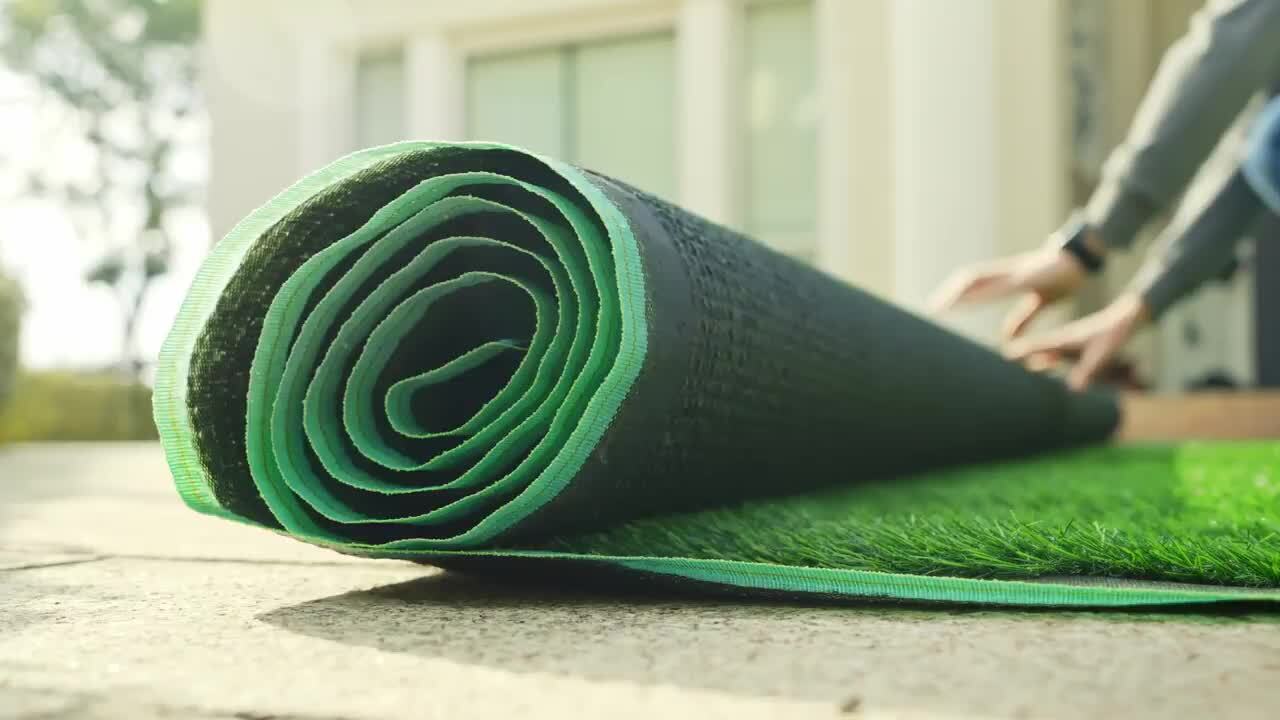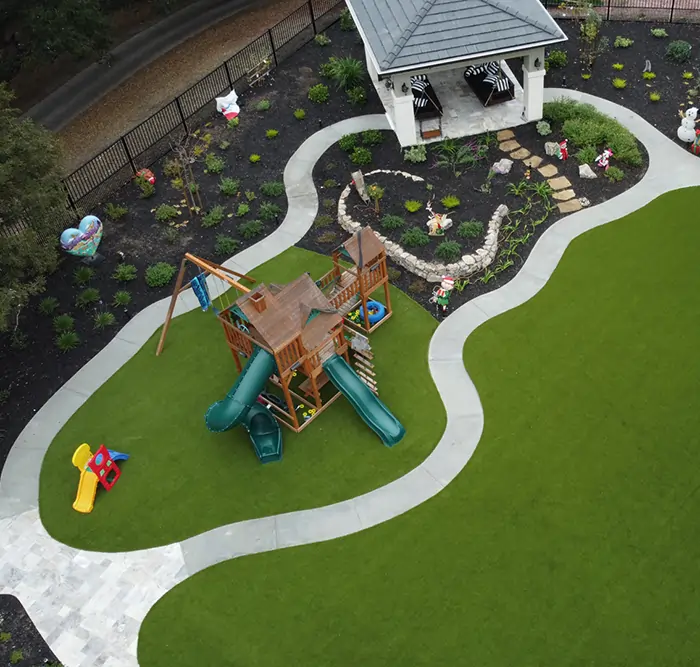Choose Reputable Artificial turf companies for Durable and Authentic Turf
Choose Reputable Artificial turf companies for Durable and Authentic Turf
Blog Article
Understanding Exactly How Man-made Lawn Works for Your Home and Garden
Artificial turf has actually emerged as a functional solution for property owners seeking to enhance their outdoor rooms without the concerns of traditional grass upkeep. The ramifications of picking man-made grass extend beyond simple look; they touch upon ecological factors to consider and long-lasting sustainability.
Benefits of Synthetic Grass
Recognizing the growing appeal of synthetic grass, it is important to explore its numerous advantages. Unlike natural lawn, artificial lawn does not require fertilization, watering, or mowing, which translates to time and price savings for homeowners.
Additionally, synthetic grass gives a lavish and consistently eco-friendly look throughout the year, despite weather. This visual allure improves the visual top quality of any type of landscape, making it an eye-catching choice for homes. Moreover, synthetic grass is resilient and developed to withstand heavy foot traffic, making it an ideal option for families with children and animals.
Security is one more vital factor to consider; modern synthetic grass is often made from non-toxic products and includes shock-absorbing modern technologies, minimizing the threat of injuries during play. Lastly, synthetic grass is resistant to pests and weeds, eliminating the need for chemical treatments, therefore advertising a much healthier exterior environment. Overall, the advantages of synthetic grass make it an engaging choice for improving home and garden areas.
Installation Refine Review
When thinking about the installation of synthetic grass, a systematic technique is vital to make sure optimal outcomes. The setup procedure generally starts with thorough site preparation, which includes removing the area of any existing turf, debris, and rocks. This action is important for establishing a stable and degree structure.
Next, it is necessary to analyze the drain capacities of the area. Correct drainage is vital to avoid water merging externally, which might result in early wear or concerns with mold. If needed., this might require excavation and the installment of a drainage system.
When the website is prepared, a base layer is mounted, generally containing crushed rock or decomposed granite, compacted to produce a solid surface. After attaining a smooth base, a geotextile textile is put down to hinder weed growth.
The last phase entails laying the man-made lawn itself. The lawn rolls are put, cut to fit, and secured at the joints using glue or specialized turf tape. Ultimately, infill materials may be related to boost stability and enhance the general look. Correctly complying with these steps will lead to a resilient and aesthetically pleasing fabricated grass setup.
Types of Synthetic Grass

Among the main groups is residential lawn, which is commonly used in gardens, yards, and play areas. This type commonly features a soft texture, making it risk-free for youngsters and pet dogs. Business turf, on the other hand, is engineered for high-traffic locations, such as sports areas and community parks. It provides durability and strength, guaranteeing it stands up to strenuous usage while keeping its appearance.
Another classification includes landscape grass, which resembles all-natural grass closely to boost the visual allure of yards and outside spaces. Additionally, placing eco-friendly lawn is particularly developed for golf fanatics, featuring a shorter stack height and a smooth surface area for an see this website optimal putting experience.
Last but not least, pet-friendly turf integrates antimicrobial residential or commercial properties and long lasting products to make sure a hygienic and risk-free environment for animals. Picking the ideal type of synthetic grass is crucial for attaining the intended appearance and performance in your home and yard.
Maintenance Requirements
Appropriate upkeep is vital for prolonging the life-span and appearance of synthetic grass. Normal maintenance not just boosts aesthetic allure yet also ensures optimum efficiency. The main maintenance tasks consist of brushing, rinsing, and inspecting the lawn.

Rinsing the turf with water aids remove dirt, debris, and pet dog waste. Utilizing a pipe with a spray nozzle makes this task efficient and efficient. In locations susceptible to heavy rains, ensure correct drainage to prevent merging.
Furthermore, regular assessments for damages, such as splits or loose seams, are essential. Timely fixings can avert more substantial issues and preserve the integrity of the turf. By adhering to these maintenance needs, homeowners can enjoy the appeal and performance of their synthetic grass for years to find, ensuring a vibrant and inviting outdoor area.
Ecological Factors To Consider
Synthetic grass presents an intricate selection of ecological factors to consider that call for Full Report careful examination. Mesa artificial grass. While it decreases the need for water, fertilizers, and pesticides, which are generally associated with all-natural yard upkeep, there are significant issues concerning its manufacturing, use, and disposal
The manufacturing of artificial turf involves petroleum-based materials, raising questions about fossil fuel consumption and greenhouse gas emissions. The setup procedure frequently needs a layer of infill, frequently composed of materials like crumb rubber, which can release harmful chemicals right into the setting.

Disposal of synthetic grass provides another challenge, as it is not eco-friendly and can add to landfill waste. Some recycling options exist, however they are not widely readily available or accessible.
Final Thought
In recap, synthetic grass provides various benefits for residential and yard applications, including visual allure, reduced maintenance, top article and safety for youngsters and animals. The installment procedure needs careful consideration of drainage, base materials, and lawn positioning to make certain longevity and efficiency. Various sorts of artificial lawn provide to various demands and choices, while ecological factors to consider highlight its possible sustainability advantages. Generally, synthetic grass acts as a eye-catching and functional choice to natural lawn in outside areas.
On the whole, the benefits of man-made lawn make it a compelling alternative for enhancing home and garden areas.
When considering the installation of artificial grass, a systematic method is essential to ensure optimum outcomes. The lawn rolls are positioned, reduced to fit, and safeguarded at the seams using sticky or specialized lawn tape. Appropriately adhering to these steps will result in a resilient and visually pleasing fabricated lawn setup.
In summary, man-made grass offers numerous benefits for household and yard applications, consisting of visual appeal, low maintenance, and safety for kids and family pets.
Report this page